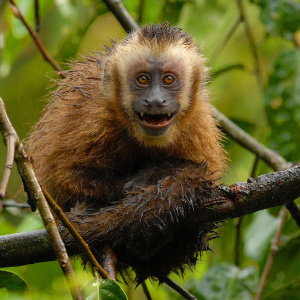The effort we make over the next ten years will be critical to the survival of the Amazon. That is why we are building and strengthening our partnerships, scaling our work, and innovating to combat threats, conserve biodiversity, and drive the sustainable development of the region.
Download our 2020-2030 Strategy


To achieve a thriving Amazon, we developed a holistic approach that unites people, science, technology, and innovation in each of our conservation solutions in our 124-million-acre landscape and which can be replicated across the wider Amazon.

We protect critical ecosystems and biodiversity by creating and strengthening protected areas, ensuring landscape connectivity essential for species survival, and directly addressing threats.
Learn more >
We build sustainable and resilient livelihoods that protect standing forests, as well as strengthen environmental governance that improves protection and management of natural resources.
Learn more >
We develop innovative conservation solutions through science and technology, and employ our network of conservation hubs as living laboratories where we carry out and host robust scientific research, develop and test cutting-edge technologies, and facilitate learning for the next generation of conservationists.
Learn more >Our strategy establishes a bold agenda to increase our impact across the southwest Amazon by approximately sixteen times, to ensure enduring conservation across 124 million acres. Larger than the state of California, this region contains a distinct set of interconnected iconic landscapes that have unique characteristics that shape our approach in each place.

This chain of diverse protected areas interspersed with other lands is anchored by Manu National Park in Peru and Madidi National Park in Bolivia, offering the opportunity to protect the most biodiverse landscape in the world. | 23.5 Million Acres

In this area, Peru is honoring its commitment to protect the traditional territories of unconnected tribes to safeguard their well-being and the natural resources on which they have relied for millennia. | 13.5 Million Acres

This stretch of land is endowed with an abundance of valuable, renewable natural resources where sustainable forest enterprises can support long-term biodiversity conservation and improved human well-being. | 35 Million Acres

These highland wetlands and cloud forests are key headwaters of the Amazon, providing crucial natural resources for people and nature and safeguarding highland biodiversity. | 22 Million Acres

One of the largest savanna complexes in South America and the largest lowland wetlands complex in the world sits in this area of the Amazon basin. | 29 Million Acres
The 124 million acres where we focus our on-the-ground efforts is a microcosm of the wider Amazon, and a living laboratory for finding solutions that are applicable well beyond our boundaries. We scale our impact by engaging and bringing together partners at the national level in Bolivia and Peru, as well as across the entire Amazon. Leading national and international collaborations also brings greater knowledge, political support, and investments back to our focus area in the headwaters of the Amazon.

We work with national governments in Bolivia and Peru to improve the conditions for conservation in each country. Through our longstanding partnerships with governments, NGOs, communities, and academic institutions, our actions and impact on the ground are helping drive national-level policy changes. For instance, our pioneering efforts introduced conservation concessions as an innovative public-private tool for forest protection, and our current real-time deforestation monitoring work has helped create the governmental framework in Peru that uses cutting edge technology to systematically take action against illegal deforestation.

We are committed to bolstering conservation across the Amazon by sharing our approach to managing protected areas, building sustainable and resilient livelihoods, and applying science and innovative technology. Rather than doing it alone, we seek out local partners like us and build cross-boundary opportunities to bring this approach to scale, which avoids duplication of work and enables best practices to be implemented across international borders. For instance, we are extending our real-time deforestation monitoring using satellite imagery across the entire Amazon basin. We do this by building the capacity of local partners to pilot this technology, verifying its effectiveness and impact, and bringing it to scale in their own countries.